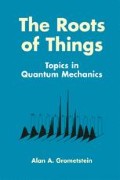Abstract
Rutherford’s model of the atom as a miniature Copernican planetary system was a grand concept: it appealed to the imagination and was immediately adopted. The image was quite clear, quite anschaulich: the nucleus was at the center and the electrons (as Rutherford assumed and everyone agreed) were in circular orbits about the nucleus. Why did the electrons have to be in orbit? To counter the attraction of the positively charged nucleus: if an electron were at rest, it would be drawn into the nucleus and the atom would collapse.2 Why did Rutherford assume the orbits were circular? For no strong reason: it was the simplest assumption he could make and would serve for the present. Other questions, such as the size of the orbits and the planes of the orbits, he did not address. (In the solar system, for cosmological reasons that don’t apply to atoms, all planets have orbital planes that are within a few degrees of each other—the solar system is flat. But there was no reason to expect that electron orbits would be coplanar.)
Access this chapter
Tax calculation will be finalised at checkout
Purchases are for personal use only
Preview
Unable to display preview. Download preview PDF.
Endnotes
Robert Cecil, Marquis of Salisbury, Presidential Address to the British Association, 1894.
The appendix on accelerated charges argues the reasonableness of this statement.
At Columbia, we were told of a student at Y**e who was so ignorant that his classmates noticed. This was unkind and, I think, untrue; his classmates probably never noticed.
There are proofs of correctness in mathematics, which is abstract and whose only requirement is that it be free of contradiction. Physics, on the other hand, deals with the world and must be accurate. This distinction is the basis for Willard Gibbs’s sly observation that, “A mathematician may say anything he pleases, but a physicist must remain at least partially sane.”
Niels Hendrik David Bohr (1885–1962), Nobel laureate, 1920.
If the electron were at rest far from the nucleus, its energy by convention would be 0. Since energy must be supplied to transport it from its orbit to that resting spot, its energy in orbit is negative. An electron with —10 units of energy is more tightly bound to the nucleus than one with —2 units. An electron with —0.001 unit of energy is almost free.
“My valour is certainly going!—it is sneaking off! I feel it oozing out… at the palm of my hands!” R. B. Sheridan, The Rivals, Act V, Scene iii. This is evidence that—whatever form courage takes in the 20th century-200 years ago it was not quantized.
This parameter was first known as the quantum number, but it soon became evident that additional numbers were needed to fully specify the state of an electron.
Classical physics had no explanation for the size of atoms. Why weren’t they 10 times larger? ten times smaller? Planck’s constant entered physics as a natural unit from which the size could be derived. Thereafter, those who dealt with such matters had to stop asking, “Why are atoms the size they are?” and ask, “Why is Planck’s constant the magnitude it is?” This is progress of a sort.
The Lyman and Paschen lines are not in the visible part of the spectrum, which is why they took longer to discover.
Johannes Rydberg (1854–1919) was a Swedish spectroscopist who laid the groundwork, by his careful measurements of line spectra, for later discoveries. He measured the constant named for him to seven significant figures, but, until Bohr introduced his atom model, no explanation of it was available.
Franck (1882–1964), German physicist who emigrated to the United States when the Nazis assumed power. Nobel laureate, 1925. Hertz (1887–1975), German physicist and nephew of Heinrich Hertz. Colaureate with Franck, 1925.
Vacuum tubes (remember?) had glowing central structures: their cathodes. Solid-state devices supply electrons in more efficient ways.
I hope you are not confused between volts, V, and electron volts, eV: 1 volt is a unit of potential difference; 1 electron volt is a unit of energy, namely, the energy acquired by an electron in moving through a potential difference of 1 V. “Potential difference” and “energy” are distinct.
Zeeman (1865–1943), Nobel laureate, 1902.
… Alice went on saying to herself, in a dreamy sort of way, “Do cats eat bats?…. and sometimes ”Do bats eat cats“ for, you see, as she couldn’t answer either question, it didn’t much matter which way she put it. [Carroll 1865:Chapter 1]
Letter to Bohr of March 20, 1913; qu [French & Taylor 1978:604]; also quoted with minor variants in [Pais 1986:212]. By stationary state, Rutherford meant an atom with all its electrons in allowed orbits: that is, an atom not undergoing any energy change. The term has gained wide acceptance.
[Matthew 9:17].
Rights and permissions
Copyright information
© 1999 Springer Science+Business Media New York
About this chapter
Cite this chapter
Grometstein, A.A. (1999). Bohr’s Atom (1913-1925). In: The Roots of Things. Springer, Boston, MA. https://doi.org/10.1007/978-1-4615-4877-5_10
Download citation
DOI: https://doi.org/10.1007/978-1-4615-4877-5_10
Publisher Name: Springer, Boston, MA
Print ISBN: 978-1-4613-7213-4
Online ISBN: 978-1-4615-4877-5
eBook Packages: Springer Book Archive

